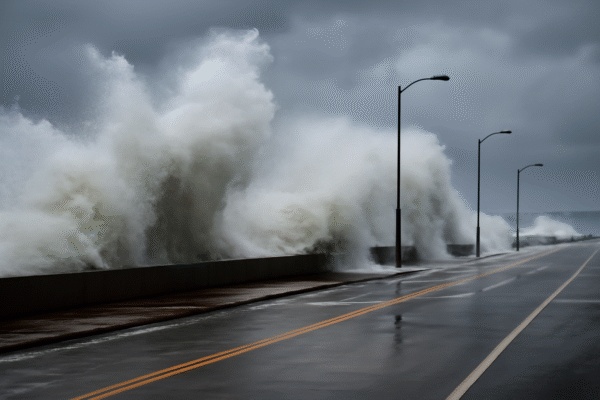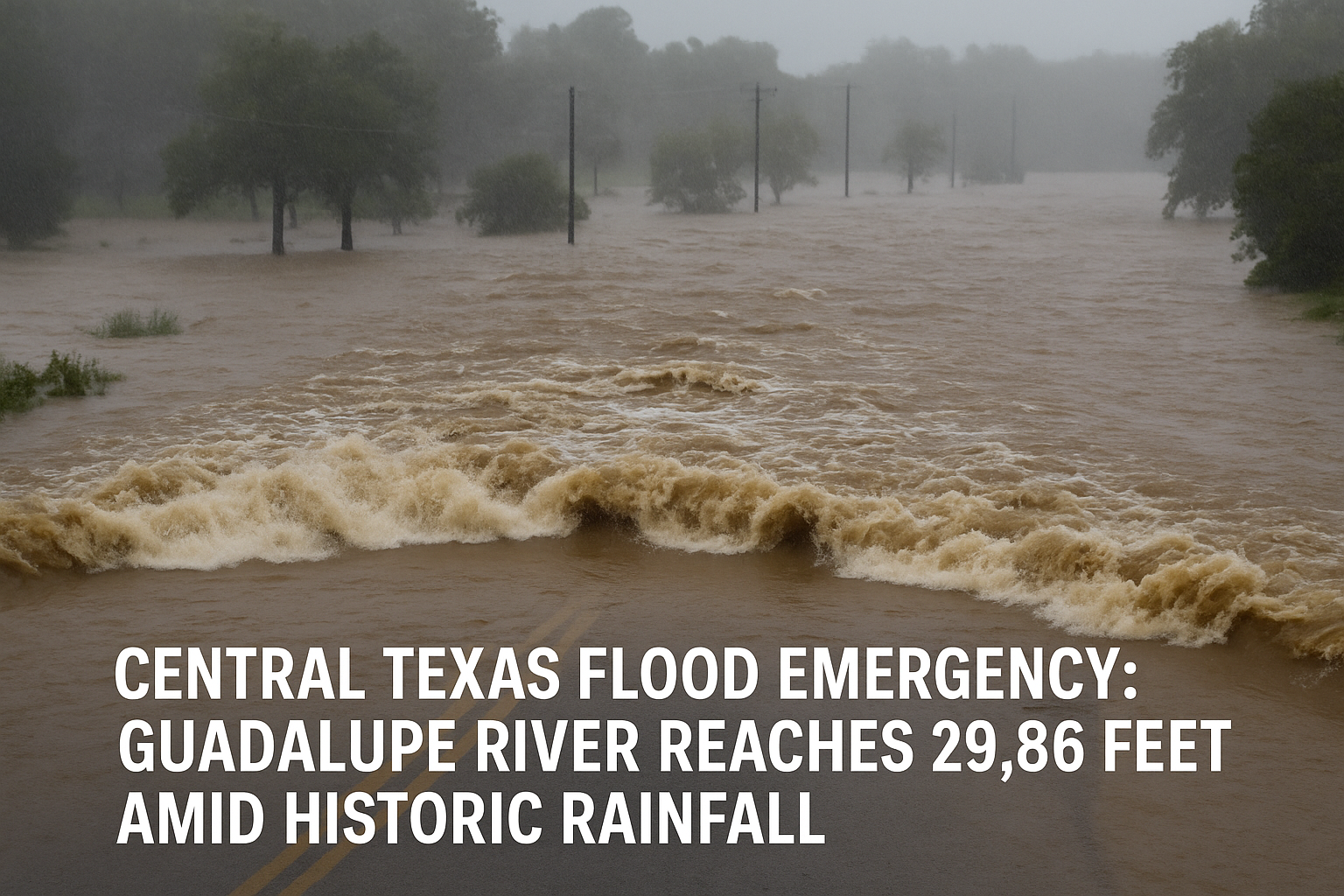Central Texas is facing a historic and life-threatening flood event as intense rainfall overwhelms the region’s river systems. The Guadalupe River, a key artery through the Texas Hill Country, surged to a record-breaking 29.86 feet in Comfort, Texas—rising more than 22 feet in just 30 minutes—prompting widespread evacuations, rescue operations, and road closures.
The dramatic water rise occurred between 9:00 a.m. and 9:30 a.m., catching residents and emergency crews off guard. Comfort, a small town northwest of San Antonio, was especially hard hit. Entire neighborhoods are under water, with reports of stranded families awaiting rescue from rooftops. Texas emergency management teams, including swift-water rescue units, have been deployed across Kerr, Kendall, and Gillespie Counties to assist.
Kerrville and Hunt Also Under Siege
Kerrville, located along the same river system, experienced a similar surge. The Guadalupe River jumped by 21.6 feet in just one hour, with water levels reaching 11.64 feet—well beyond the flood stage. Several downtown streets are impassable, and low-lying communities have been evacuated.
Nearby Hunt, although not yet as severely impacted, saw the river reach 13.99 feet and is under moderate flood stage. Officials there are urging residents to remain alert and prepare for additional rises if rain continues.
Flash Flood Warnings Extend to San Saba, Concho, and Colorado Rivers
The National Weather Service (NWS) has extended flash flood warnings for the San Saba, Concho, and Colorado Rivers. Communities in McCulloch, Concho, and San Saba counties are facing flood advisories due to saturated soils and full reservoirs.
According to the Lower Colorado River Authority (LCRA), multiple dams are being monitored for overflow potential, and floodgates may be opened to prevent further downstream damage. Officials from the Texas Division of Emergency Management (TDEM) have confirmed coordination with FEMA to assess federal disaster declarations in the hardest-hit counties.
Disaster Relief Underway as Damage Mounts
Gov. Greg Abbott has issued disaster declarations for Kerr, Kendall, and Llano counties. The Texas Department of Transportation (TxDOT) has closed over two dozen roads, including key routes into and out of Comfort and Kerrville, due to submerged bridges and washed-out roadbeds.
The Texas State Guard, part of the broader Texas Military Department, has been activated to assist with logistical and evacuation support, particularly in rural areas cut off by floodwaters. Shelters have been established at area schools and community centers, with support from the American Red Cross.
Environmental and Economic Impacts Emerging
The agricultural toll is already evident. Hundreds of acres of farmland in the Hill Country are underwater. Crops such as corn, cotton, and hay—vital to the Central Texas economy—have likely been lost. The Texas A&M AgriLife Extension Service has issued preliminary damage assessments estimating multimillion-dollar losses in just Kerr and Gillespie Counties.
In addition, there are growing concerns about erosion, habitat destruction, and contamination from flooded septic systems and industrial runoff. Texas Parks and Wildlife has issued advisories warning boaters and anglers to avoid flooded rivers, where debris and swift currents pose extreme hazards.
Weather Outlook: More Rain Ahead
The National Oceanic and Atmospheric Administration (NOAA) forecasts continued rainfall for the Texas Hill Country through Thursday. A persistent upper-level trough is channeling moisture into the region, with rainfall totals already exceeding 12 inches in some areas since July 5.
The NWS warns that additional rainfall could lead to secondary surges along the Guadalupe, Llano, and Pedernales Rivers. With soil saturation at maximum levels, any further precipitation could result in additional flash flooding.
Public Safety Remains Priority
Local officials continue to urge residents to “Turn Around, Don’t Drown”, the well-known flood safety motto. Flooding remains the leading cause of weather-related deaths in Texas, and even a few inches of moving water can sweep away a vehicle.
Authorities have also stressed the importance of having an emergency evacuation plan, charging mobile devices, and keeping an emergency kit ready. Those in flood-prone areas are advised to monitor local alerts via NOAA weather radio or county emergency services websites.
Recovery and Long-Term Resilience
Once floodwaters begin to recede, Central Texas will face a long recovery. FEMA and the U.S. Army Corps of Engineers are expected to assist with damage assessments, infrastructure repairs, and emergency funding for families who have lost homes or businesses.
Community leaders are also calling for enhanced investment in flood mitigation infrastructure, including improved levees, updated flood maps, and rural warning systems. These latest floods serve as a stark reminder of the increasing volatility of Texas weather patterns, which experts at the Texas State Climatologist’s Office attribute in part to climate change and more intense storm systems.
For more travel news like this, keep reading Global Travel Wire


















